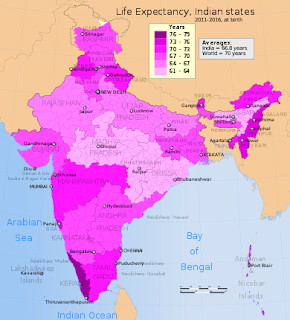Literacy rate in india
Certainly, India's literacy rate has undergone significant changes over the years. In this blog, we will discuss the present scenario of literacy rate in India.
Literacy is a critical indicator of social and economic advancement in many ways. Perhaps that's why it is regarded as one of the most critical development indicators for every country. According to reports, the overall literacy rate in India has increased significantly in recent years.
According to the 2011 census, the overall literacy rate in India stood at 74.04%. There has been a significant increase in the overall literacy rate since the early 2000s, with a steady increase in the nationwide literacy rate over the years. The overall literacy rate rose from 64.8 percent in 2001 to 74.04 percent in 2011.
Regional Literacy Rate:
Moreover, it is essential to note that there is a significant difference in regional literacy rates in India. States such as Kerala, Delhi, and Lakshadweep have some of the highest literacy rates in the country, while states like Bihar and Rajasthan have some of the lowest literacy rates.
The country's gender gap in education has always been another important consideration. Nonetheless, over time, the gender disparity among the Indian population's literate has lessened. According to a UNESCO report, the gender gap in literacy rates in India has decreased from 21.7 percent in 2001 to 16.7 percent in 2011. Although still, a substantial gender gap persists in literacy rates, as male literacy rates are 82.14 percent, while the female literacy rate is 65.46 percent.
Here are some of the most frequent causes of illiteracy in adults according to :
- Parents with little schooling
- Lack of books at home and lack of stimulation as to the importance of reading
- Doing badly at or dropping out of school—many have not completed high school
- Difficult living conditions, including poverty
- Learning disabilities, such as dyslexia
The Indian government has launched numerous initiatives to boost its literacy rates over the years. Provisions for free education, incentivized education, learning facilities, and awareness campaigns in underserved territories were among the steps taken to promote literacy in India. Another initiative, "Sarva Siksha Abhiyan," aims to provide education to all young children in India.
In conclusion, India has made progress in its literacy rate over the years, but serious challenges remain, particularly in low-literate states. It is now critical to bridge regional literacy gaps and reduce the gender gap in literacy rates to ensure that every Indian has access to education and its prosperity.
.jpeg)



Comments
Post a Comment